
“Come on, what’s keeping you?!” Mateczka seems to be saying, and well she might, because never have I been this tardy with a post: yesterday these photos were a fortnight old. A very different world is out there – but, surprisingly, still damp and still no real cold – i.e. I don’t think night temps have been below 5 degrees Celsius. Here we are setting off on our walk and about to cross the wall of the Makou Dam below the Big House.

Here we look upstream; the rounded yellow tree in the centre is the Water Oak (Quercus nigra) outside The House that Jack Built. Most of the colour in the above two photos is from Pin Oaks (Q. palustris) and Swamp Cypresses (Taxodium distichum).

The bench under the Pin Oak is always a good spot to stop and stare. And the dogs cavort on the lawn or snuffle in the undergrowth when I sit here. As good as a walk, they say.
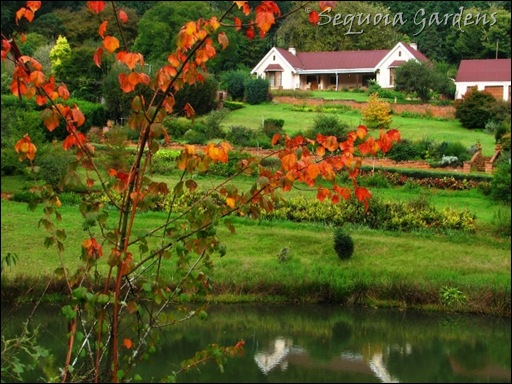
As we climb the slope to the Arboretum, the Big House and its gardens are framed by an Acer forrestii.

We climb still higher and Doubly takes a rest whilst I photograph the double pink Camellia Sasanqua.

Here it is again on the right; the red is mainly Japanese maples (Acer palmatum) and the yellows far left are the Pin Oaks and Liquidambars which one sees from The House that Jack Built. Tomorrow morning I must decide if my dad’s little Fox Terrier, Stompie, must be taken to the vet and be put down. I think not yet; despite pain and discomfort, yesterday she again accompanied us on a walk after a few days of not being interested. I used to fold her ears over her head and call her the Duchess of Windsor. She has always eaten like a horse but remained perfectly thin. Besides looking like the Duchess with her ears on top of her head (remember her odd squared-off hair style?) she always reminded me of the Duchess’ infamous words: one can never be too rich or too thin. Well, too rich we never quite managed…

Here is a close-up of, I think, Acer rubrum, the Red Maple, which featured last week with mauve azaleas…

Many of the’evergreen’ azaleas feature the odd bright red or yellow leaves, forming a lovely chorus line for the main autumn characters. This one has some unseasonal red flowers to boot. (or is that ‘to dancing shoe’?)

Here we look out again across the autumn garden, the two tall Eucalyptus trees dominating, even with just their trunks…
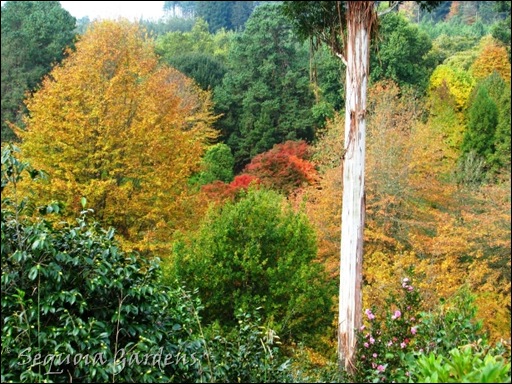
And here you see it again in a little more detail.

Here we look a little more to the left and up the valley. The yellow in the centre is the double avenue of Tulip Trees (Liriodendron tulipifera). Before the neighbour’s house, a tree from the avenue of Sweetgums (Liquidambar styraciflua) on our border can be seen behind an avenue of Pin Oaks.

In a close-up from the same spot – who says Seurat invented pointillism?!

I always thought the Tulip Tree was named thus because the unusual leaves look like a child’s drawing of a tulip. Not so; it is the vague resemblance of its flowers that gave the name!

‘The last hydrangea of summer’ doesn’t quite have the ring of ‘the last rose’, but this one from the planting under the tulip trees sure shows why I love the long season of interest the mopheads give me…
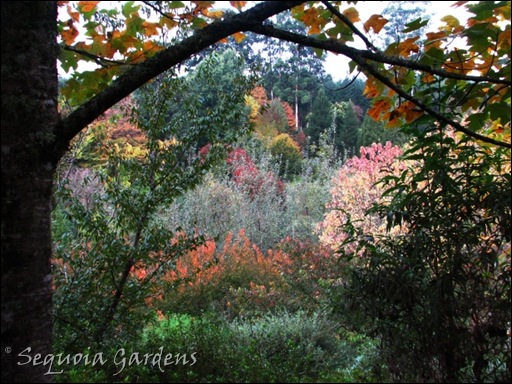
From under a Tulip Tree – the middle ground colour is from the flowering cherry Prunus ‘Kanzan’ and a Silver Maple, Acer saccharinum.

Most of this colour is from Liquidambars; those in the middle are near The House that Jack Built and the furthest ones are the avenue marching up the hill on our border towards the stand of Sequoia trees (Sequoia sempervirens) which break the horizon and which gave the farm its name.

Here is a closer view of the same subject, focusing on the crescendo of our autumn compositions: the trees on Freddy’s Dam near The House hat Jack Built. In the centre, the smaller, brighter flame is an orangeTupelo (Nyssa sylvatica) planted right on top of a yellow Persian Ironwood (Parrotia persica) which seemed to be dying but revived the moment there was competition. To their left Liquidambars provide red, orange , yellow and purple; they in turn are backed by an avenue of Pin Oaks. To the right of the flame the rounded shape of a Japanese Maple is in the early stages of turning. Behind them pink and white Dogwoods (Cornus florida) and several different flowering cherries (Prunus sp.) also provide magnificent autumn colour, as do several different Berberis, Spiraea, Viburnum and an Amelanchier. For now you’ll have to believe me when I mention all this profusion!
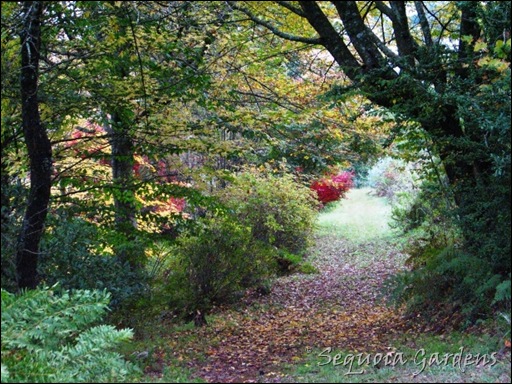
Now we’ve dropped down to the road below the arboretum; here we are in the area across the dam from The House that Jack Built, with maples and flowering cherries providing most of the colour.

Nearby the Katsura Tree (Cercidiphyllum japonicum) has the unusual distinction of autumn leaves which smell of burnt sugar… candyfloss comes to mind for most people!

As we move upstream along the road, we see a magnificent Prunus subhirtella pendula surrounded by several fine examples of Acer palmatum atropurpureum group which show various levels of red in their leaves through the seasons, and all turn in different ways in autumn.
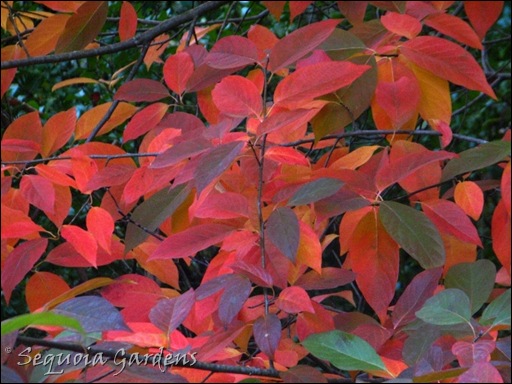
Near here is a fine example of Nyssa sylvatica which I grew from seed – one of the most mouth-watering of all autumn trees.

The stream is just visible beneath the weeping cherry, the dogs explore, waiting for me to speed up, and my favourite red-leaved plane is showing further down the road.
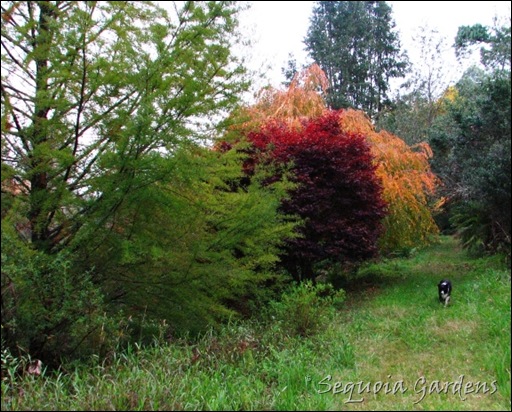
And Doubly follows at his own pace…

The autumn leaves of a Plane ( Platanus x hispanica) are usually yellowish. This strong red leaf I found amongst hundreds of typical trees in a nursery far from Sequoia one autumn. I picked it up nonchalantly, hoping no-one would notice what a treasure I had just collected… it starts to turn in mid-Feb and still has a few leaves at the end of May… nowhere in the literature is a red-leaved plane that grows so strongly recorded…

Now we double back to capture the view across the dam…

And eventually I capture the piece de resistance from the bridge, whilst the thirsty dogs create ripples on the water… to see the view from The House that Jack built, go back to my post from two weeks ago.






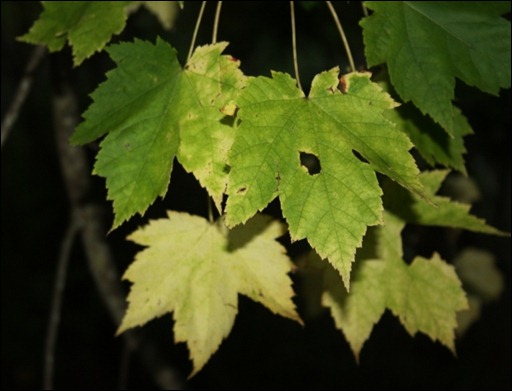
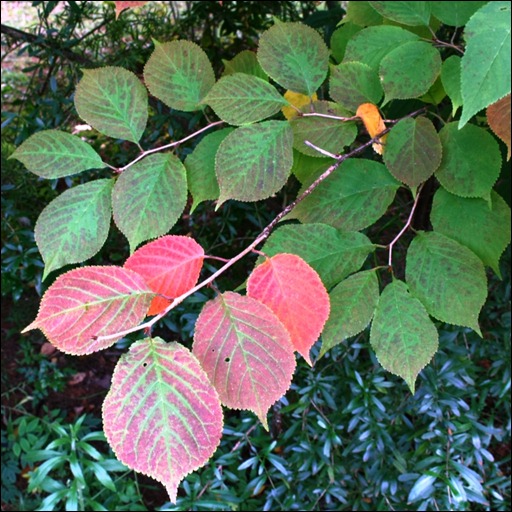




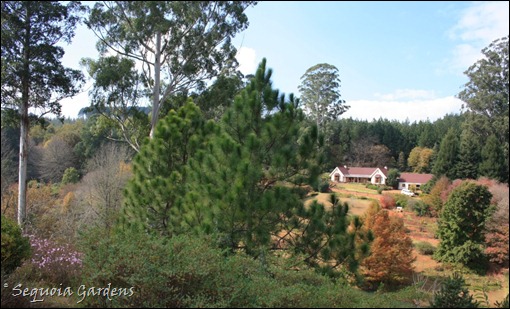


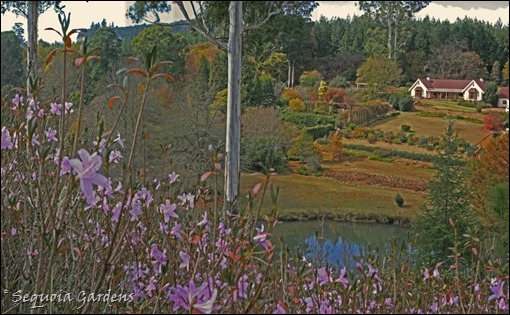


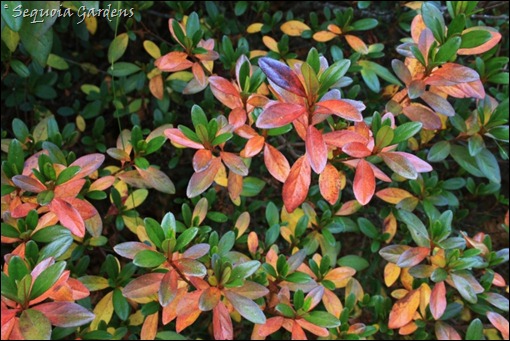

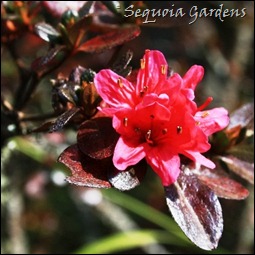
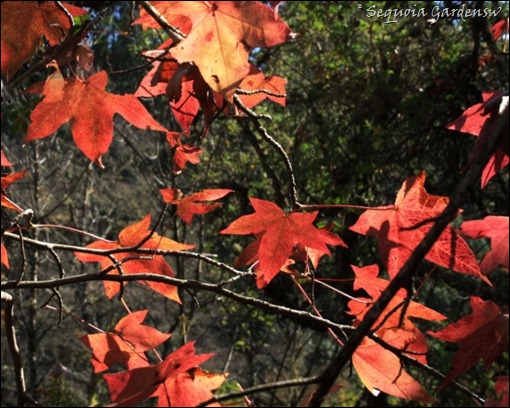

























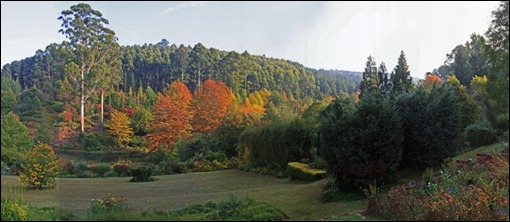

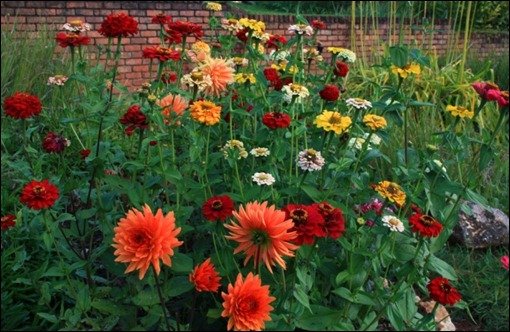
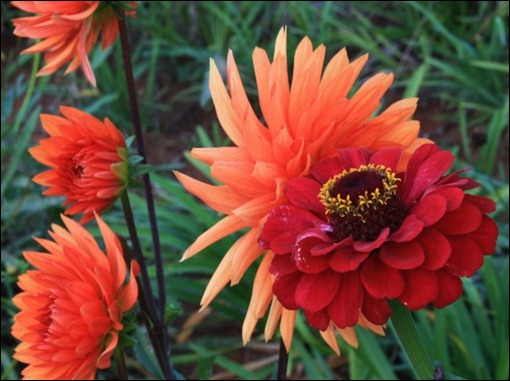

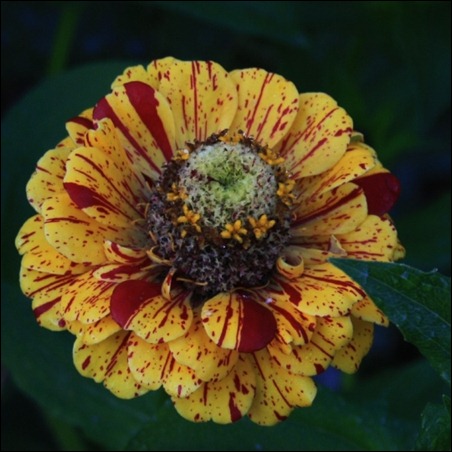

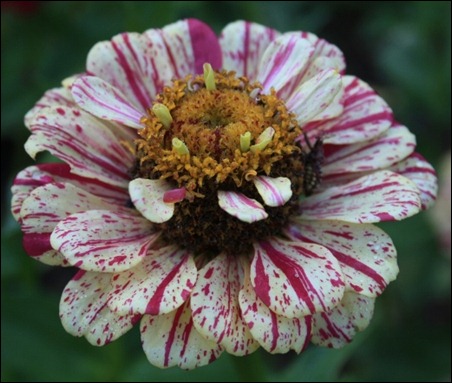














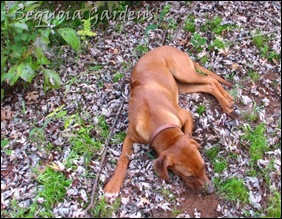
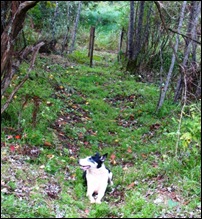




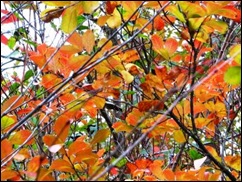
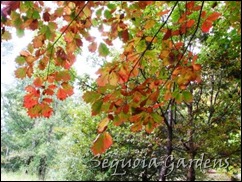













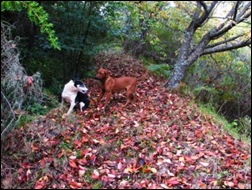







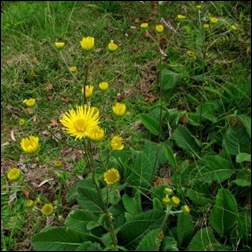

































You must be logged in to post a comment.